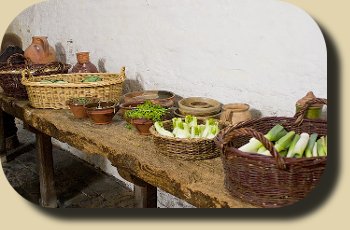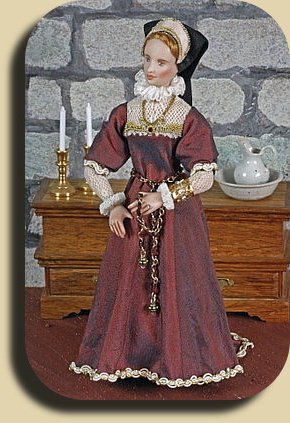
November 2010, Issue 10
The Tudors
Page 72
Continue The Tudors
 The poor sometimes kept a couple of chickens and caught rabbits to supplement their diets.
Rich landowners encouraged the poor to shoot crows and rooks due to the damage these birds caused to crops.
The poor sometimes kept a couple of chickens and caught rabbits to supplement their diets.
Rich landowners encouraged the poor to shoot crows and rooks due to the damage these birds caused to crops.
A few managed to keep bee hives and used the honey for sweetening. Bees at that time were not striped but black.

Another interesting colour variation of then and now is carrots, which were a purple shade and not orange. This variety is still available for today's garden - I have seen seed packets for them!
Sanitation during this period was a decided problem and sweet herbs were strewn on kitchen floors to mask odours. Rats were also commonplace. Offal, vegetable peelings and dirty water were thrown out into the streets.
In the towns, there were no public toilets and people 'went' wherever it was convenient! In addition to this, people did not often bathe and the ladies carried sweetly scented nosegays (to keep the nose gay was to keep the nose happy) and wore pomanders (filled with dried flowers, herbs and spices) attached to their clothing.
Thankfully miniature scenes don't necessarily include scents, but a tiny nosegay or two tucked here and there would never be remiss and some sweet smelling herbs or spices might add another unique dimension for your piece of miniature history.
Custom Dolls, Houses & Miniatures / CDHM







